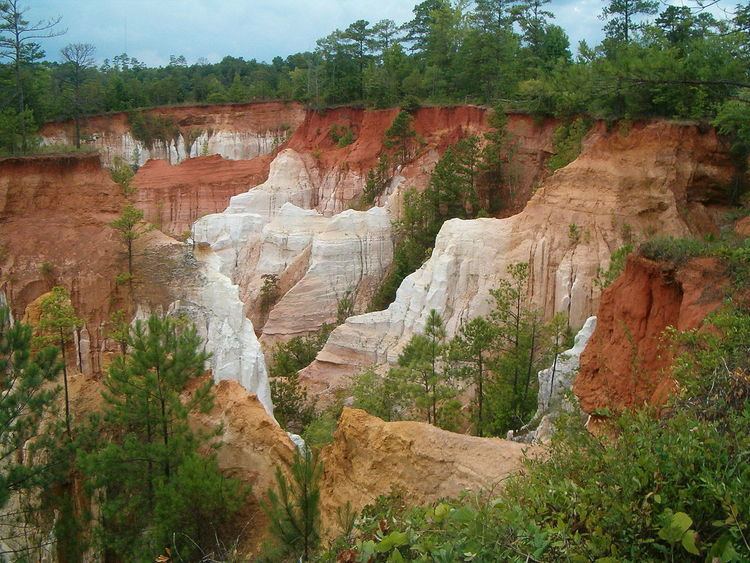- elevation 500 ft (152 m) Phone +1 229-838-6870 | Area 4.059 km² | |
 | ||
Address 8930 Canyon Rd, Lumpkin, GA 31815, USA Hours Open today · 7AM–6PMTuesday7AM–6PMWednesday7AM–6PMThursday7AM–6PMFriday7AM–6PMSaturday7AM–6PMSunday7AM–6PMMonday7AM–6PMSuggest an edit Similar Florence Marina State Park, Hart State Park, Cloudland Canyon State Park, Kolomoki Mounds, Unicoi State Park | ||
Little grand canyon providence canyon state park
Providence Canyon State Park is a 1,003 acres (4.06 km2; 1.57 sq mi) state park located in Stewart County in southwest Georgia. The park contains Providence Canyon, which is sometimes called Georgia's "Little Grand Canyon". It is considered to be one of the Seven Natural Wonders of Georgia. Providence Canyon actually is not a purely natural feature — the massive gullies (the deepest being 150 feet) were caused by erosion due to poor farming practices in the 19th century. It is also home to the very rare plumleaf azalea.
Contents
- Little grand canyon providence canyon state park
- Providence canyon state park in lumpkin ga with road trip story
- FacilitiesEdit
- Yearly eventsEdit
- References
This old story of the origin of the canyons has been commonplace since the 1940s. Although there were probably a few early arrivals before 1825, the first heavy influx of settlers in Stewart county came after the Treaty of Indian Springs (1825) by which the Creek Indians ceded all their lands east of the Chattahoochee river. Evidence of the existence of the canyons is their mention in a deed by James S Lunsford to William Tatam recorded in 1836.
The park lies on marine sediments—usually loamy or clayey, with small areas of sand. Loamy sand topsoils overlie subsoils of sandy clay loam, sandy clay, or clay in most of the uneroded section. Nankin, Cowarts, Mobila, and Orangeburg are the most prominent soil series. The canyons have much exposure of clay, over which water often seeps. Water is mobile in this well drained area.
One of the quirkier attractions of the state park is an abandoned homestead including nearly a dozen rusty, 1950s-era cars and trucks. Due to the environmental damage that removing the vehicles would cause, park officials have decided to leave them alone.
